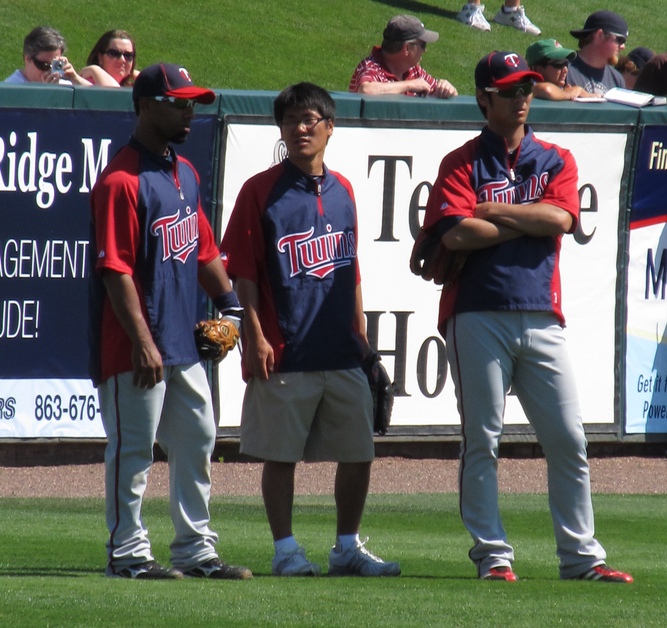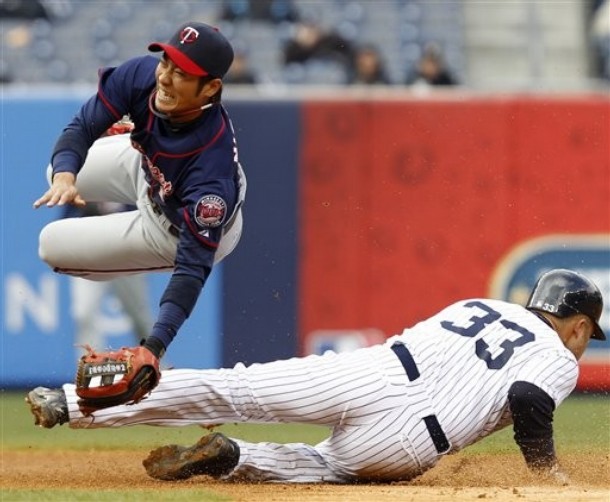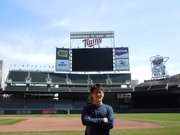
Sapporo, a city in the Japanese archipelago‘s northernmost island of Hokkaido, is more than five thousand miles from Minneapolis, but to Ryo Shinkawa the two places will be forever entwined. An internship in the former eventually led to his current position in the latter, as the interpreter for Minnesota Twins second baseman and 10-time NPB All-Star Tsuyoshi Nishioka.
Shinkawa’s stint as Interpreter Intern with the Nippon Ham Fighters of NPB was brief – a mere ten days – but it gave him valuable insight into Japanese baseball. Wanting a job in the sports industry, Shinkawa saw his time with the Fighters as a window into professional baseball – on either side of the Pacific. “I felt this opportunity would allow me to get a better understanding of the Japanese players coming to the MLB as well,” says Shinkawa via e-mail.
Shinkawa left his native Japan to attend Baldwin-Wallace College, where he worked as a student assistant in the sports information office. The school’s proximity to Cleveland allowed Shinkawa the opportunity to intern with the Indians‘ PR department during the 2008 and 2009 seasons. In this position Shinkawa worked in the press box and assembled clips and minor league reports, but his fluency in Japanese was his biggest asset. At the time the Indians had a Japanese pitcher named Masa Kobayashi, and although as a college junior Shinkawa couldn’t travel with the team and work full time, he was able to interpret for and assist the Japanese media in Cleveland. “I appreciate the people with the Indians allowing me to get my foot in the door and gain experience interpreting,” says Shinkawa.
That experience led to interpreting for Boston Red Sox reliever Hideki Okajima last season. As Nishioka’s interpreter, Shinkawa has a different mindset than with Okajima. “I approached this job differently being [Nishioka’s] first year in the major leagues and living in the United States [for the first time],” says Shinkawa. Plus, he says, “Interpreting for a pitcher compared to a position player is a completely different world.”

The nuances of practice and the daily routine for an infielder are not like that of a pitcher. “Working with a pitcher in the bullpen compared to being behind the batting cages with a position player brings a different atmosphere and longer days,” says Shinkawa.

“During the season it’s quite different being in the dugout compared to the bullpen . . . Although every team can be different, my experience of going through the major league season once from spring training allows me to visualize the flow and prepare for what may come.”
Yet Shinkawa and the Twins may not have been prepared for what happened early this season. On April 7 Shinkawa helped Nishioka off the field at Yankee Stadium after Nick Swisher slid into the Japanese star while breaking up a double play. X-rays revealed a fractured left fibula, and the second baseman has been on the DL ever since. While the Twins don’t have a firm date for Nishioka’s return, the 2010 Pacific League batting champion has been rehabbing at Target Field and, more recently, at the team’s spring training facility in Florida.

Despite the setback of the injury, Shinkawa still has a routine with Nishioka. “The job I do might be a little different as he’s not playing in the games, but how I approach my job hasn’t changed due to that.”
The interpreter says he focuses on the “people element” of his interpretation. “ . . . It’s more of dealing with different personalities and characters within the clubhouse, front office, and the individual players,” than simply translating a sentence from English into Japanese.
Shinkawa is also mindful of the cultural aspects of interpreting. “When you’re with an NPB team your main language and culture is Japanese, and when you’re working for an MLB team your main language is English inside the American culture. Everything is the opposite, and you need to learn to be flexible having that American side of you work in Japan and the Japanese side of you working in the United States.”
Both cultures came together after the devastating earthquake and tsunami ripped through northeastern Japan, with the Twins organization making a $25,000 donation to Minnesota-based non-profit Feed My Starving Children.

“The Twins have been great trying to support the relief fund in Japan,” says Shinkawa. As a former contributor to the website NPB Tracker, Shinkawa still follows Japanese baseball online and thinks the game is important as the Japanese move forward from this tragedy. “Baseball has always been a big part of Japanese culture, and I definitely think it could play a role [in healing the nation],” he says.
And that’s important in any language.
In related NPB news, the Rakuten Golden Eagles returned to their stadium in Sendai on April 29 for their first home game after Kleenex Miyagi Stadium sustained damage as a result of the earthquake and tsunami. The Eagles defeated the Orix Buffaloes 3-1, an emotional win for starting pitcher Masahiro Tanaka and his teammates.


